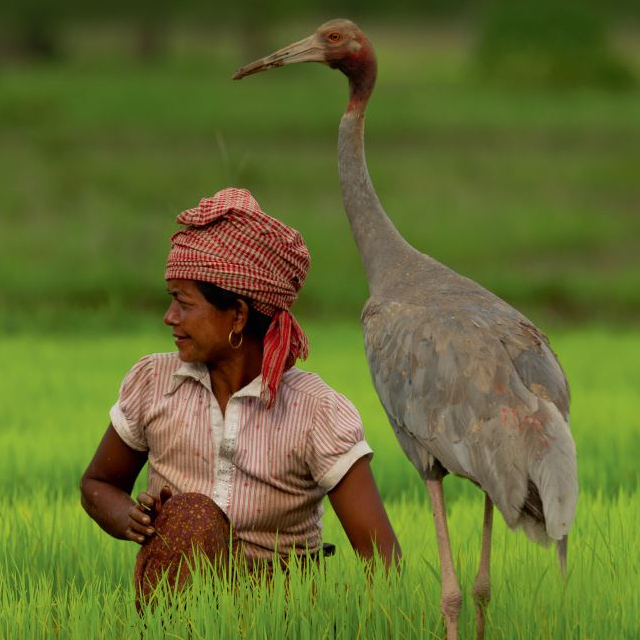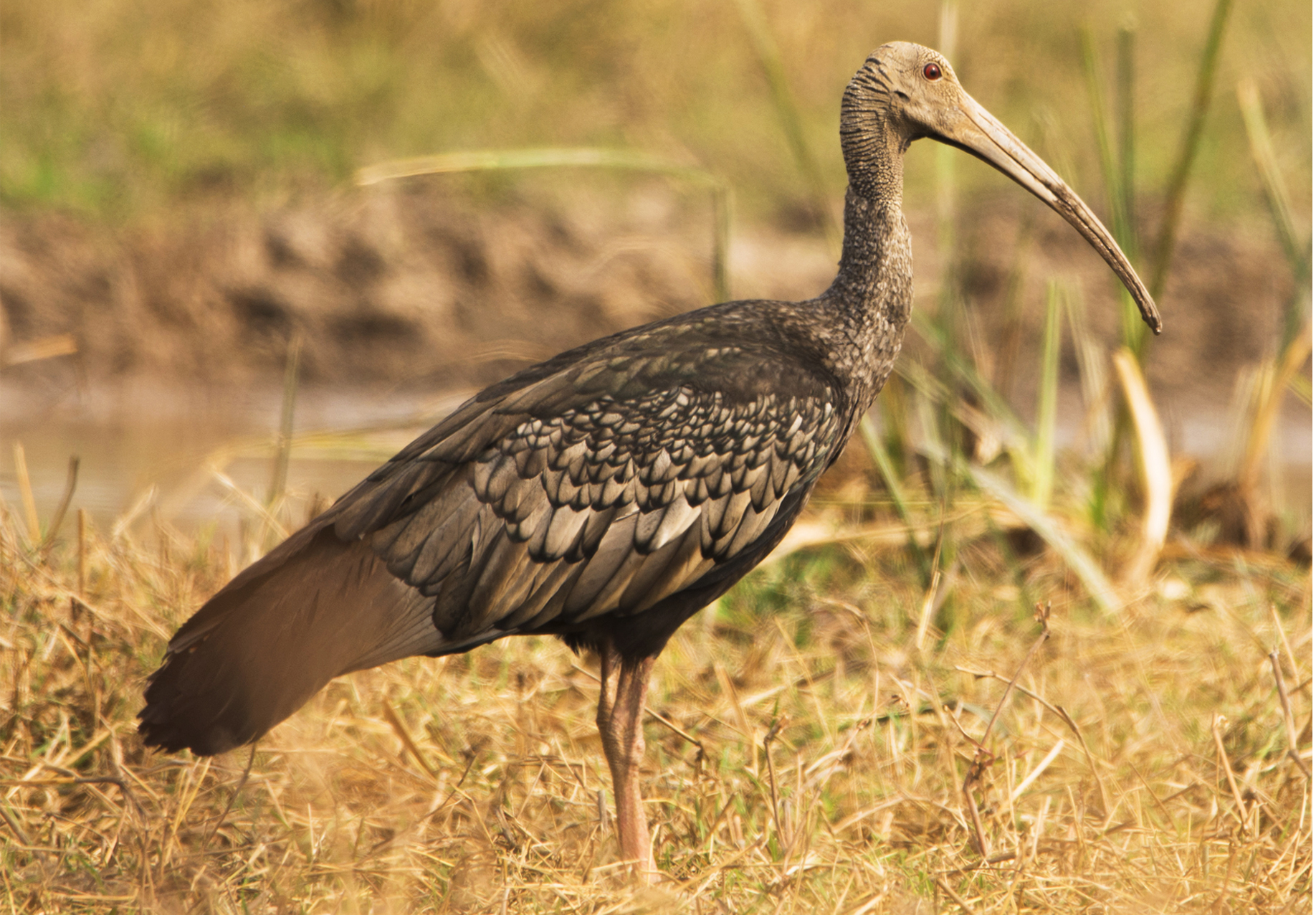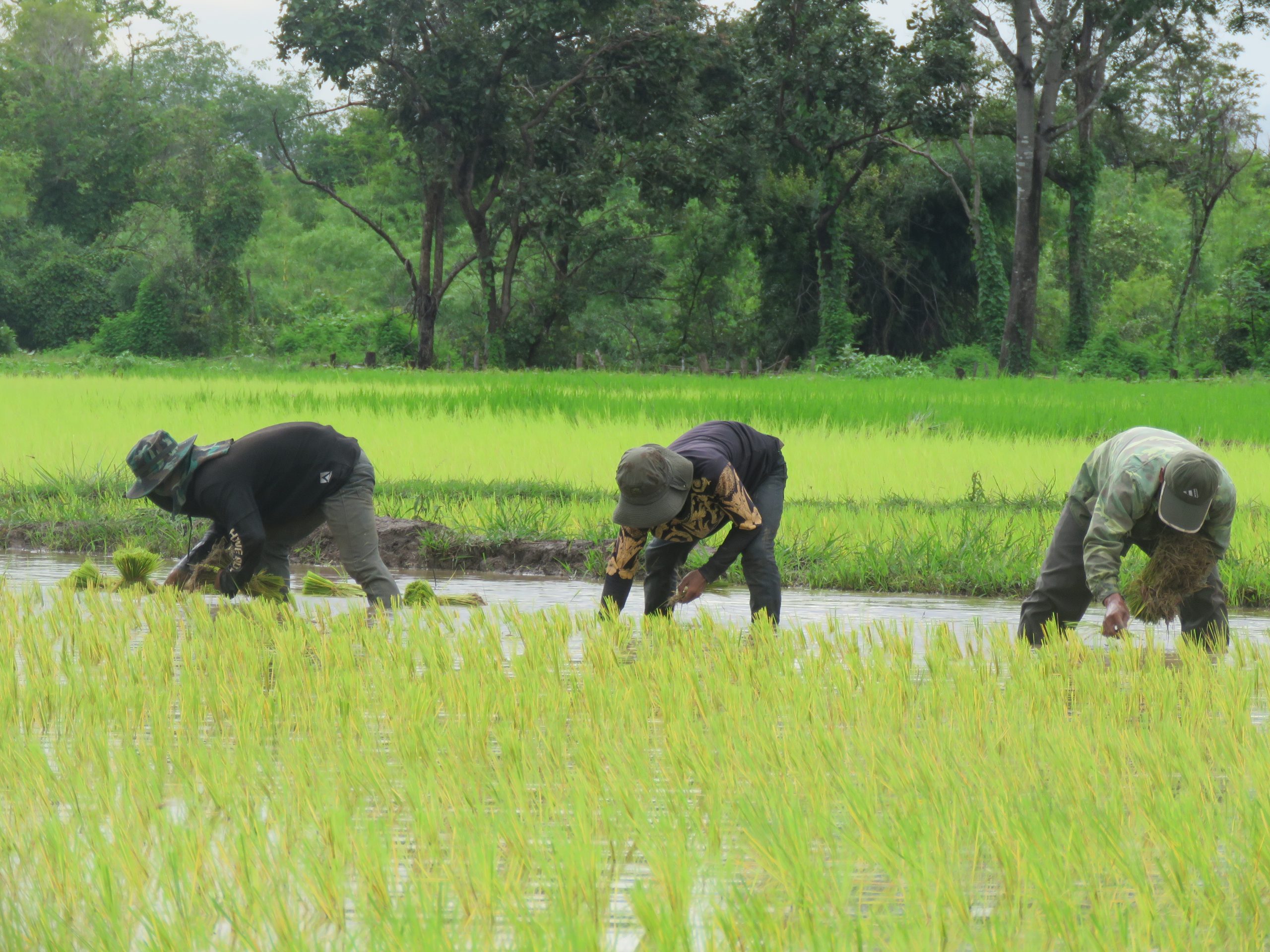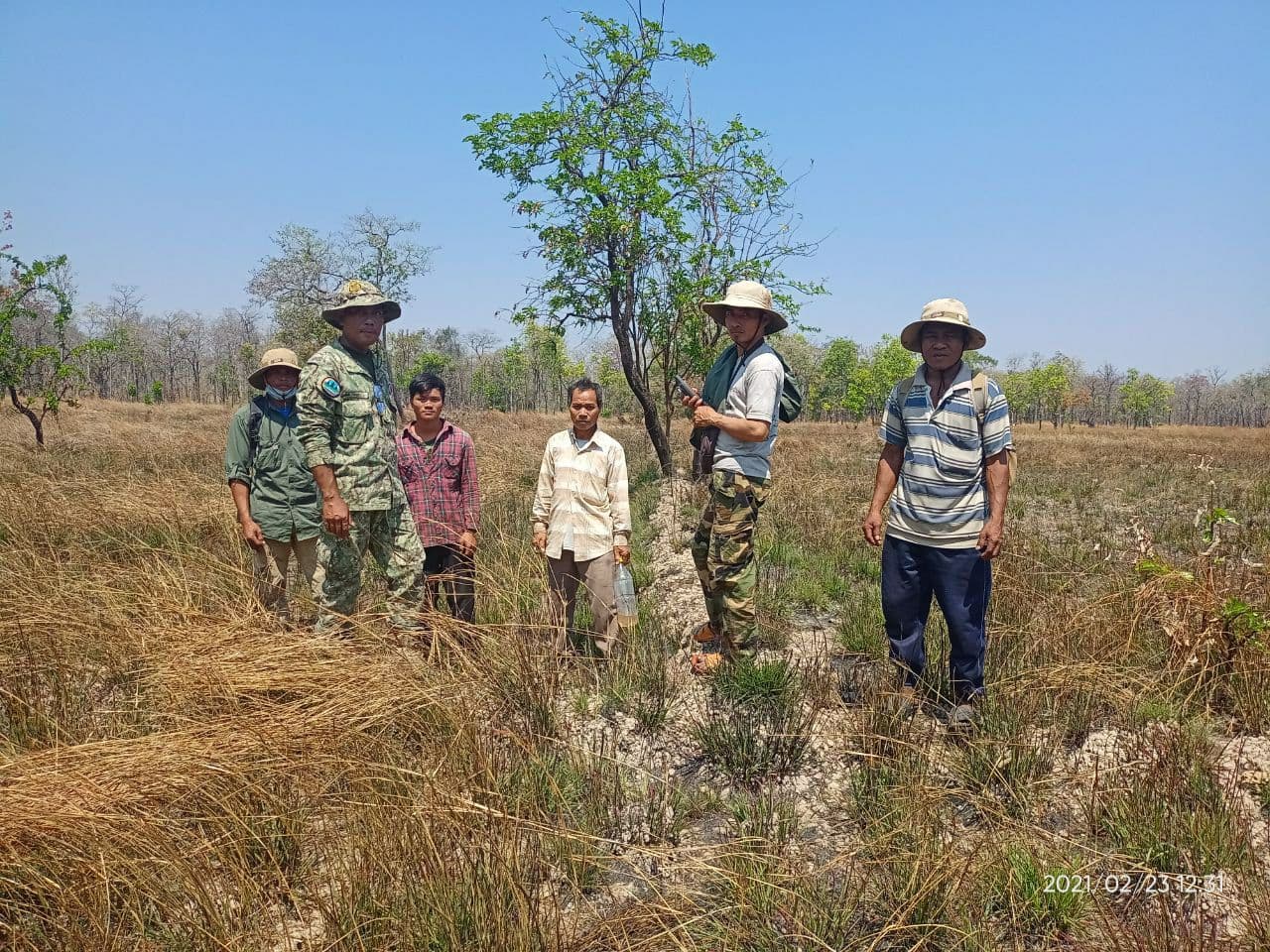 © Jonathan Eames
© Jonathan Eames
Precious Cambodian forests, people and unique birds protected by growing sustainable rice

In a country where forest loss has been massive, it is crucial to conserve as much natural landscape as possible

These wildlife havens are home to some uniquely rare bird species – including Cambodia’s national bird, the giant ibis

Sustainable, nature-friendly rice is supplying a way to protect forests and provide increased income for communities





Secured funding to create protected areas, supported management of 7,000ha of forest, engaged more conservation allies, increased monitoring capacity, supported household income and cut deforestation with IBIS rice schemes.
Trillion Trees’ partner BirdLife International (BLI) has a proven track record of success working with local communities in this area since 2004. For example, helping Lomphat Wildlife Sanctuary secure funding for six years – which resulted in setting up two Community Protected Areas (CPAs) and one local conservation group. We’ve also provided substantial support for the management of 7,000 hectares of forests – helping reduce the annual deforestation rate inside the CPAs to below 1% (less than a third of what it was). And have been building up the capacity of forest rangers, introducing a new computer monitoring system (SMART). BirdLife has also been involved in supporting law enforcement to protect forests and wildlife, and keeping up a dialogue with the concession holders to ensure conservation standards.
The IBIS sustainable rice initiative was originally introduced to Cambodia by Trillion Trees partner WCS. Since BirdLife launched its IBIS rice scheme in Western Siem Pang in 2017, over 160 households have joined up, producing and selling more than 40 tons of organic rice at a 20% premium price. The success of this scheme has paved the way for a similar one in Lomphat.
Promoting sustainable agriculture to increase community incomes, better monitoring to prevent forest damage, training and supporting local conservation advocates.
IBIS Rice is a successful and ambitious not-for-profit conservation enterprise helping Cambodian farmers to produce and sell world-class, sustainable organic jasmine rice. Participating farmers agree not to hunt, log or encroach upon the forest, and to grow their rice organically, without harmful chemicals. In return they receive a premium price for their rice, which is sold under the IBIS brand name in outlets around the world.
As part of the IBIS Rice scheme, the land is mapped, its ecological value assessed, and agricultural advice and training shared with farmers, along with rice seeds. It is proving a viable, sustainable alternative to concession plantations of biofuels, or illegal logging and other resource exploitation. As household income rises, villagers are less likely to exploit natural resources or damage the forest. Research by the University of Oxford and WCS shows that households participating in the IBIS Rice scheme have increased levels of wealth faster, and damaged the forest four times less, than other households. The scheme is being implemented in two villages in Lomphat, with at least 200 households taking part. That will mean 500 rural people with increased food security. We also support local ranger teams to patrol in conservation zones across the region, and conduct an annual forest survey to monitor deforestation and land encroachment.
To help make sure local communities and the government buy into the sustainable rice scheme, NatureLife Cambodia organises meetings and presentations to share information about the success of the scheme so far, and respond to any concerns and questions. It is through this kind of consistent environmental education, and putting sustainable livelihoods high on the agenda, that Trillion Trees partners have convinced more local people about the benefits of biodiversity and forest protection. Many have become so passionate about the cause that they are spreading the word themselves by visiting local primary and secondary schools – educating the next generation on the value of nature and conservation.
The forests of north-eastern Cambodia used to be protected by their remoteness – but that is no longer the case.
Along with increasing infrastructure developments in the Lomphat and Western Siem Pang areas, ‘land concession’ licences have been handed out in recent years for commercial timber plantations, with oil palm, rubber and banana trees, or biofuel crops (such as sugarcane and jatropha). This has all led to some of the worst deforestation in the world. Most of Cambodia’s original primary forest cover has been lost. The government’s Forestry Administration is under-resourced, and forest management is made more difficult by frequent illegal land-grabbing. The protected sanctuaries of Lomphat and Western Siem Pang, in the north-east, are bastions of hope. But with poverty rates so high here, there is pressure for even officially protected areas to generate income for local communities and government.
Saving these forests is crucial for many reasons. Within the Lomphat Wildlife Sanctuary there are 26 villages whose people depend on ecosystem services provided by the forests and rivers. The Western Siem Pang forest is part of a unique block of wildlife habitat that allows free movement and viable populations of some of the rarest large animal and bird species in Asia. Classified as an Important Bird and Biodiversity Area (IBA), this relatively small location is home to a unique concentration of critically endangered birds – including the Giant Ibis, Cambodia’s national bird, once feared extinct but now with a new haven here. It is also home to rare vultures, and the Sarus Crane – the world’s tallest flying bird (up to 6ft in height). Threatened mammal species here include the Eld’s deer and the sun bear – the smallest of all bears, and the most tree-dwelling.
Most of Western Siem Pang is still covered by forest typical of the original vegetation of central Indochina. A mix of dry dipterocarp trees and denser semi-evergreen forest. Scattered throughout the forest are pools and seasonally wet meadows, locally known as trapaengs, crucial for the area’s biodiversity. These trapaengs were produced over time by the activities of traditional pastoralists – their grazing cattle would create clearings in the forest, and marshy depressions in the ground that deepened into pools of water. Local communities depend on these trapaeng wetlands for water, fish and non-timber forest products.
Local people here traditionally grow rice, cashew nut, mango, sesame, soybean, mung bean, and harvest wild honey and fish. But unpredictable floods, droughts and fluctuating market prices have meant these have often been unreliable sources of food and income. This often leads people to exploit other natural resources, such as hunting wild animals and illegal logging. Without Trillion Trees project action, the forest will continue to be degraded and lost piecemeal, if not cleared completely for plantations.
In locations like these there will always have to be a balance struck between environmental conservation and financial viability. Solutions must combine effective forest protection with a sound sustainable business model.